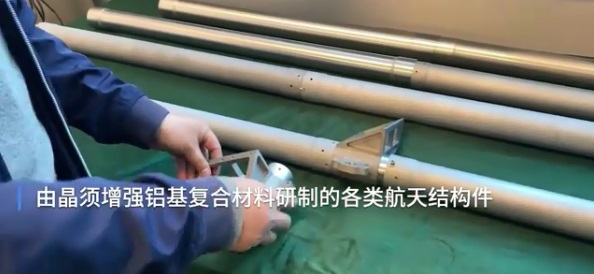The robotic arm of the Chang'e-5 detector is 3.7 meters long, weighs 3,100 grams, and has a thickness of 1.4 mm.
In the laboratory of HEGD Advanced Materials Technology Group, we saw this silver-white robotic arm model.
The HEGD lightweight and heat-resistant metal matrix composites team has been engaged in the research and development of metal matrix composites[e.g.SiC silicon carbide reinforced aluminum matrix composite] for more than 30 years. During the “earth excavation” trip of Chang'e 5, the R&D team conquered a number of key technologies for the application of aluminum-based composite materials in the aerospace field and participated in the development of a robotic arm.
Whisker-reinforced aluminum-based composite material for aviation structural parts

Time goes back to late night on December 2, 2020. The Chang'e-5 "stretched" robotic arm, after nearly 15 hours, continuously sampled 12 times, successfully completing the task of sampling the lunar surface and subsurface lunar soil. When the robotic arm filled the sample container and transferred it to the packaging container accurately, the HEGD team members breathed a sigh of relief.
"Every 1 gram flying into the sky must be calculated carefully." HEGD's CTO said that in the aerospace field, lightweight is an eternal theme, and every 1 gram of weight reduction will save huge costs. At the same time, the manipulator must achieve large area, multiple areas, multiple times, long-term continuous sampling and key actions, so it must increase strength, rigidity and dimensional stability on a light basis.
The moon belongs to a vacuum environment. As the sun changes, its surface temperature is as high as 100 degrees Celsius and the lowest is below minus 50 degrees Celsius. The robotic arm has to withstand a huge temperature difference.
In accordance with strict environmental requirements, the HEGD R&D team has developed whisker-reinforced aluminum-based composite materials, which solves the core technology for the development of lightweight, high-rigidity and high-strength aerospace structural parts. At the same time, the team also developed a set of detection technology and detection devices, which realized the precise detection of the stiffness of the robotic arm, and obtained two national invention patent authorizations, which provided technical support for the analysis and testing of similar products.
In the experimental stage, a little bit of weak vibration may cause the test data to fluctuate and affect the test results.

